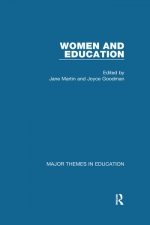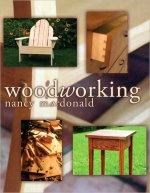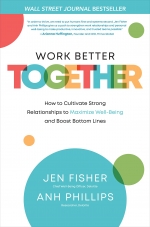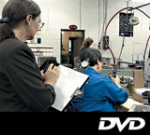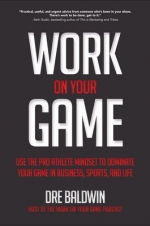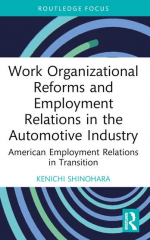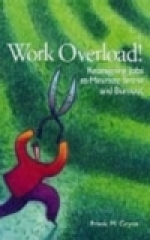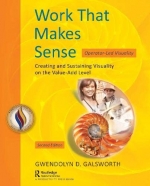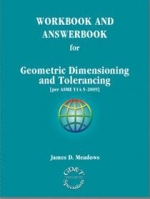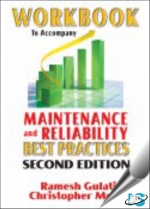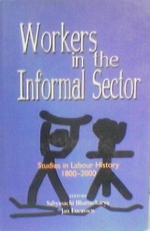Site Breadcrumb
Total Record : 10230
ISBN: 0415471761 / 9780415471763
Year: 2009
Availability: 45-60 days print-
This new four-volume collection from Routledge brings together the best and most influential scholarship on women and Christianity. It presents an up-to-date, multidisciplinary, and comprehensive compilation of women’s reflection on the Bible and Christian doctrines; women’s religious roles and movements; and contemporary issues facing Christian women around the world.
- printmohan- nprint-This new four-volume collection from Routledge brings together the best and most influential scholarship on women and Christianity. It presents an up-to-date, multidisciplinary, and comprehensive compilation of women’s reflection on the Bible and Christian doctrines; women’s religious roles and movements; and contemporary issues facing Christian women around the world.
- printhell ...ISBN: 0415549396 / 9780415549394
Year: 2010
Availability: 45-60 days print-
If a primary objective of feminism is to expose and challenge the social relations of power embedded in all spheres of life, then an exploration of the issues attached to female education is a vital aspect of such a project. Indeed, ‘women and education’ is now an established - and flourishing - domain of study. And as academic thinking continues to develop, this new title in Routledge’s acclaimed series, Major Themes in Education, meets the need for an authoritative reference work to make sense of the subject’s vast literature and the continuing explosion in research output.
Edited by two leading scholars in the field, Women and Education is a four-volume collection of foundational and cutting-edge contributions. Issues affecting women and education cannot be analysed in territorial isolation; while it is possible in many parts of the Western world to cite evidence of widening opportunities, choices, and potential in women’s lives, the gendered nature of educational provision, practice, and thought is often more starkly apparent in less developed parts of the world. Consequently, the collection adopts an explicitly international approach to explore fully the complexities of the educational experience, its gendered history, and its particular implications and interpretations in specific societies and locations. The collection’s temporal scope is similarly ambitious. Moreover, Women and Education is further distinguished by the inclusion of autobiographical works to capture the experience of education as a broad societal process, and not simply as formal schooling.
Volume one Space, Place, and Time is a theoretical and historical framework for the collection. Taken together, the materials gathered here constitute a sophisticated and versatile toolbox of ideas for theory-building and research. This volume, in particular, will be an invaluable tool for researchers and students of feminist theory and research methods, and for users across the social sciences concerned with issues of gender. Volume two Pupils, Students, and Learning brings together key studies in gender and education. In particular, this volume explores past experiences through autobiography and life history, and investigates gender dynamics within schools. Volume three Teachers and Teaching, meanwhile, focuses on the culture and politics of work. It presents essential findings into processes and pedagogy and gathers critical research on women teachers’ expectations, their struggles to achieve equality, and attempts to change practice. The last volume in the collection Politics and Policies contains a selection of materials that discuss the history and gendered nature of education policies. Presenting a range of views, the work gathered in Volume IV illuminates women’s place in the development of educational traditions, reforms, and theories, and examines their role as educational policy-makers.
With a full index, together with a comprehensive introduction, newly written by the editors, which places the collected material in its historical and intellectual context, Women and Education is an indispensable work of reference. It will be welcomed as a crucial database permitting rapid access to less familiar - and sometimes overlooked - texts. It will also be valued as a vital one-stop research and pedagogic resource for researchers and students of education, women’s studies, and social history, as well as for practising teachers and policy-makers.
If a primary objective of feminism is to expose and challenge the social relations of power embedded in all spheres of life, then an exploration of the issues attached to female education is a vital aspect of such a project. Indeed, ‘women and education’ is now an established - and flourishing - domain of study. And as academic thinking continues to develop, this new title in Routledge’s acclaimed series, Major Themes in Education, meets the need for an authoritative reference work to make sense of the subject’s vast literature and the continuing explosion in research output.
Edited by two leading scholars in the field, Women and Education is a four-volume collection of foundational and cutting-edge contributions. Issues affecting women and education cannot be analysed in territorial isolation; while it is possible in many parts of the Western world to cite evidence of widening opportunities, choices, and potential in women’s lives, the gendered nature of educational provision, practice, and thought is often more starkly apparent in less developed parts of the world. Consequently, the collection adopts an explicitly international approach to explore fully the complexities of the educational experience, its gendered history, and its particular implications and interpretations in specific societies and locations. The collection’s temporal scope is similarly ambitious. Moreover, Women and Education is further distinguished by the inclusion of autobiographical works to capture the experience of education as a broad societal process, and not simply as formal schooling.
Volume one Space, Place, and Time is a theoretical and historical framework for the collection. Taken together, the materials gathered here constitute a sophisticated and versatile toolbox of ideas for theory-building and research. This volume, in particular, will be an invaluable tool for researchers and students of feminist theory and research methods, and for users across the social sciences concerned with issues of gender. Volume two Pupils, Students, and Learning brings together key studies in gender and education. In particular, this volume explores past experiences through autobiography and life history, and investigates gender dynamics within schools. Volume three Teachers and Teaching, meanwhile, focuses on the culture and politics of work. It presents essential findings into processes and pedagogy and gathers critical research on women teachers’ expectations, their struggles to achieve equality, and attempts to change practice. The last volume in the collection Politics and Policies contains a selection of materials that discuss the history and gendered nature of education policies. Presenting a range of views, the work gathered in Volume IV illuminates women’s place in the development of educational traditions, reforms, and theories, and examines their role as educational policy-makers.
With a full index, together with a comprehensive introduction, newly written by the editors, which places the collected material in its historical and intellectual context, Women and Education is an indispensable work of reference. It will be welcomed as a crucial database permitting rapid access to less familiar - and sometimes overlooked - texts. It will also be valued as a vital one-stop research and pedagogic resource for researchers and students of education, women’s studies, and social history, as well as for practising teachers and policy-makers.
ISBN: 041531092X / 9780415310925
Year: 2009
Availability: 45-60 days print-
Women and Empire, 1750–1939 : Primary Sources on Gender and Anglo-Imperialism functions to extend significantly the range of the History of Feminism series (co-published by Routledge and Edition Synapse), bringing together the histories of British and American women’s emancipation, represented in earlier sets, into juxtaposition with histories produced by different kinds of imperial and colonial governments. The alignment of writings from a range of Anglo-imperial contexts reveals the overlapping histories and problems, while foregrounding cultural specificities and contextual inflections of imperialism. The volumes focus on countries, regions, or continents formerly colonized (in part) by Britain:
Volume I : Australia
Volume II : New Zealand
Volume III : Africa
Volume IV : India
Volume V : Canada
Perhaps the most novel aspect of this collection is its capacity to highlight the common aspects of the functions of empire in their impact on women and their production of gender, and conversely, to demonstrate the actual specificity of particular regional manifestations. Concerning questions of power, gender, class and race, this new Routledge–Edition Synapse Major Work will be of particular interest to scholars and students of imperialism, colonization, women’s history, and women’s writing.
Women and Empire, 1750–1939 : Primary Sources on Gender and Anglo-Imperialism functions to extend significantly the range of the History of Feminism series (co-published by Routledge and Edition Synapse), bringing together the histories of British and American women’s emancipation, represented in earlier sets, into juxtaposition with histories produced by different kinds of imperial and colonial governments. The alignment of writings from a range of Anglo-imperial contexts reveals the overlapping histories and problems, while foregrounding cultural specificities and contextual inflections of imperialism. The volumes focus on countries, regions, or continents formerly colonized (in part) by Britain:
Volume I : Australia
Volume II : New Zealand
Volume III : Africa
Volume IV : India
Volume V : Canada
Perhaps the most novel aspect of this collection is its capacity to highlight the common aspects of the functions of empire in their impact on women and their production of gender, and conversely, to demonstrate the actual specificity of particular regional manifestations. Concerning questions of power, gender, class and race, this new Routledge–Edition Synapse Major Work will be of particular interest to scholars and students of imperialism, colonization, women’s history, and women’s writing.
ISBN: 041543839X / 9780415438391
Year: 2009
Availability: 45-60 days print-
This collection is an essential research tool for all students specializing in religion and women’s studies, and will be equally useful to those working in related fields such as anthropology, cultural studies, history, literary studies, philosophy, political science, psychology, and theology. By tracing the evolution of the topic, from the beginnings of feminist research on religion to more contemporary debates about categorizations of gender in the study of religion, this four-volume collection serves the needs of both specialist and generalist users.
Women and Religion includes essays treating a broad range of religious traditions, while focusing on particular methodological and theoretical concerns common to the study of women and religion. Organized thematically, each volume includes the most formative theoretical contributions to the field, grouped together with articles that explore a particular set of issues from a range of traditions, with the use of methodologies drawn from anthropology, history, sociology, textual criticism, and religious studies. Each volume’s introductory essay explicitly problematizes the central categories of analysis operating in the study of women and religion while also setting the articles in historical context.
This collection is an essential research tool for all students specializing in religion and women’s studies, and will be equally useful to those working in related fields such as anthropology, cultural studies, history, literary studies, philosophy, political science, psychology, and theology. By tracing the evolution of the topic, from the beginnings of feminist research on religion to more contemporary debates about categorizations of gender in the study of religion, this four-volume collection serves the needs of both specialist and generalist users.
Women and Religion includes essays treating a broad range of religious traditions, while focusing on particular methodological and theoretical concerns common to the study of women and religion. Organized thematically, each volume includes the most formative theoretical contributions to the field, grouped together with articles that explore a particular set of issues from a range of traditions, with the use of methodologies drawn from anthropology, history, sociology, textual criticism, and religious studies. Each volume’s introductory essay explicitly problematizes the central categories of analysis operating in the study of women and religion while also setting the articles in historical context.
ISBN: 1468603086 / 9781468603088
Year: 2021
Availability: 45-60 days print-
Where do women fit into the automotive industry? In every possible space - including those they have yet to invent!
As Katelyn Shelby Davis and Kristin Shaw demonstrate in Women Driven Mobility, women are in leadership roles in all aspects of the industry. Davis and Shaw seek bring awareness and reroute this through a series of case studies that feature women working in 11 vital pillars of the mobility industry:
This book presents over 40 case studies of women leading the way mobility and automotive innovation. Through interviews with leaders across the entire spectrum of industry, readers see the impact of diverse perspectives on actual projects all over the world. From creating accessible AV transportation with May Mobility to developing safe pedestrian and bike routes through Tribal Land, Karuk Tribe to championing diversity, equity and inclusion across the industries, readers are walked through each stage of the project from analysis to conclusion.
Foreword by Governor Gretchen Whitmore, State of Michigan:
This is not about solving problems we anticipate tomorrow. Applied autonomy can solve real accessibility challenges facing society today.
Where do women fit into the automotive industry? In every possible space - including those they have yet to invent!
As Katelyn Shelby Davis and Kristin Shaw demonstrate in Women Driven Mobility, women are in leadership roles in all aspects of the industry. Davis and Shaw seek bring awareness and reroute this through a series of case studies that feature women working in 11 vital pillars of the mobility industry:
This book presents over 40 case studies of women leading the way mobility and automotive innovation. Through interviews with leaders across the entire spectrum of industry, readers see the impact of diverse perspectives on actual projects all over the world. From creating accessible AV transportation with May Mobility to developing safe pedestrian and bike routes through Tribal Land, Karuk Tribe to championing diversity, equity and inclusion across the industries, readers are walked through each stage of the project from analysis to conclusion.
Foreword by Governor Gretchen Whitmore, State of Michigan:
This is not about solving problems we anticipate tomorrow. Applied autonomy can solve real accessibility challenges facing society today.
ISBN: 0415445256 / 9780415445252
Year: 2009
Availability: 45-60 days print-
The academic study of women in Asia developed in the 1970s as a result of the convergence of the then emerging disciplines of Asian Studies and Women’s Studies. Initially, work on women in Asia grew from traditional branches of learning such as history, anthropology, politics, and literary studies. More recently, it has incorporated cutting-edge areas of academic endeavour, including critical theory and new thinking on sexuality, labour, health, media, and material culture. As research in and around the area flourishes as never before, this new four-volume collection from Routledge meets the need for an authoritative reference work to make sense of a rapidly growing and ever more complex corpus of scholarly literature.
Drawing together in four volumes the key research which has shaped the dynamic academic field that explores women’s lives in the Asian region over the past four decades, and edited by two leading scholars, Women in Asia provides users with a comprehensive survey of all the major issues relating to women in the world’s fastest changing and most culturally diverse region.
Volume I (‘Women and Political Power’) brings together material which explores the engagement by women in Asia with the law (e.g. struggles to acquire equal pay and inheritance rights), formal political power (e.g. structural blocks to their participation in government), and education. This volume also gathers vital contributions on women’s activism (e.g. feminist groups, comfort women’s groups, housewives’ unions, and transnational activism).
Volume II (‘Redefining Working Women’) collects research around topics including: women and unions; women in paid and unpaid labour (e.g. the gendered division of labour in Asian households); women as migrant workers; women in development; prostitution and trafficking; and women as carers.
Volume III (‘Health and Sexuality’) brings together the best - and most influential - scholarship on contentious themes such as the increasing imbalance in sex ratios in the region as a result of female infanticide, sex-selective abortions, and the kidnapping of wives. Research gathered in this volume also covers reproductive health; violence against women (e.g. female genital mutilation, dowry burnings, and honour killings); same-sex attraction and diverse gender identity; and medicine and health care (including work on traditional medicine and mental-health problems specific to women in the region, such as the high suicide rates in China and South Asia).
The material collected in Volume IV (‘Constructions of the Feminine’) focuses on women in the family (e.g. gendered role expectations); women in religion; Western perceptions of Asian women (e.g. stereotypes of passivity); women in the arts; and official discourses on the feminine (such as the promotion by Asian governments of gender roles).
Women in Asia is fully indexed and each of the four volumes has a comprehensive introduction, newly written by the editors, which provides extended reading lists and places the material in its historical and intellectual context. It is an essential work of reference and is destined to be valued by scholars and students - as well as policy-makers and community activists - as a vital one-stop research resource.
The academic study of women in Asia developed in the 1970s as a result of the convergence of the then emerging disciplines of Asian Studies and Women’s Studies. Initially, work on women in Asia grew from traditional branches of learning such as history, anthropology, politics, and literary studies. More recently, it has incorporated cutting-edge areas of academic endeavour, including critical theory and new thinking on sexuality, labour, health, media, and material culture. As research in and around the area flourishes as never before, this new four-volume collection from Routledge meets the need for an authoritative reference work to make sense of a rapidly growing and ever more complex corpus of scholarly literature.
Drawing together in four volumes the key research which has shaped the dynamic academic field that explores women’s lives in the Asian region over the past four decades, and edited by two leading scholars, Women in Asia provides users with a comprehensive survey of all the major issues relating to women in the world’s fastest changing and most culturally diverse region.
Volume I (‘Women and Political Power’) brings together material which explores the engagement by women in Asia with the law (e.g. struggles to acquire equal pay and inheritance rights), formal political power (e.g. structural blocks to their participation in government), and education. This volume also gathers vital contributions on women’s activism (e.g. feminist groups, comfort women’s groups, housewives’ unions, and transnational activism).
Volume II (‘Redefining Working Women’) collects research around topics including: women and unions; women in paid and unpaid labour (e.g. the gendered division of labour in Asian households); women as migrant workers; women in development; prostitution and trafficking; and women as carers.
Volume III (‘Health and Sexuality’) brings together the best - and most influential - scholarship on contentious themes such as the increasing imbalance in sex ratios in the region as a result of female infanticide, sex-selective abortions, and the kidnapping of wives. Research gathered in this volume also covers reproductive health; violence against women (e.g. female genital mutilation, dowry burnings, and honour killings); same-sex attraction and diverse gender identity; and medicine and health care (including work on traditional medicine and mental-health problems specific to women in the region, such as the high suicide rates in China and South Asia).
The material collected in Volume IV (‘Constructions of the Feminine’) focuses on women in the family (e.g. gendered role expectations); women in religion; Western perceptions of Asian women (e.g. stereotypes of passivity); women in the arts; and official discourses on the feminine (such as the promotion by Asian governments of gender roles).
Women in Asia is fully indexed and each of the four volumes has a comprehensive introduction, newly written by the editors, which provides extended reading lists and places the material in its historical and intellectual context. It is an essential work of reference and is destined to be valued by scholars and students - as well as policy-makers and community activists - as a vital one-stop research resource.
ISBN: 9380964048 / 9789380964041
Year: 2013
Availability: Out of Stock print- - printmohan- nprint- - printhell ...
| Buy This Item |
| List Price: ` 695 |

Notify Me |
ISBN: 0367767821 / 9780367767822
Year: 2023
Availability: 2 to 3 weeks print-
The market for durable products using modified wood has increased substantially during the last few years. This is partly because of the restriction on the use of toxic preservatives due to environmental concerns, and to lower maintenance cost and time. Furthermore, as sustainability becomes a greater concern, the environmental impact of construction and interior materials is factored in planning by considering the whole life cycle and embodied energy of the materials used.
Wood is modified to improve its intrinsic properties, enhance the range of applications of timber, and to acquire the form and functionality desired by engineers without calling the environmental friendliness into question. Wood modification processes are at various stages of development, and the challenges faced in scaling up to industrial applications differ. %u3000
The aim of this book is to put together the key elements of the changes of wood constituents and the related changes in wood properties of modified wood. Further, a selection of the principal technologies implemented in wood modification are presented. This work is intended for researchers, professionals of timber construction, as well as students studying the science of materials, civil engineering and architecture. This work is not exhaustive, but intends to deliver an outline of the scientific disciplines necessary to apprehend the technologies of wood modification and its behavior during treatment, as well as during its use.
The market for durable products using modified wood has increased substantially during the last few years. This is partly because of the restriction on the use of toxic preservatives due to environmental concerns, and to lower maintenance cost and time. Furthermore, as sustainability becomes a greater concern, the environmental impact of construction and interior materials is factored in planning by considering the whole life cycle and embodied energy of the materials used.
Wood is modified to improve its intrinsic properties, enhance the range of applications of timber, and to acquire the form and functionality desired by engineers without calling the environmental friendliness into question. Wood modification processes are at various stages of development, and the challenges faced in scaling up to industrial applications differ. %u3000
The aim of this book is to put together the key elements of the changes of wood constituents and the related changes in wood properties of modified wood. Further, a selection of the principal technologies implemented in wood modification are presented. This work is intended for researchers, professionals of timber construction, as well as students studying the science of materials, civil engineering and architecture. This work is not exhaustive, but intends to deliver an outline of the scientific disciplines necessary to apprehend the technologies of wood modification and its behavior during treatment, as well as during its use.
ISBN: 0863413560 / 9780863413568
Year: 2005
Availability: Out of Stock print-
Scope: This new book concentrates on the mechanical aspects of distribution wood pole lines, including live line working, environmental influences, climate change and international standards. Other topics include statutory requirements, safety, profiling, traditional and probabilistic design, weather loads, bare and covered conductors, different types of overhead systems, conductor choice, construction and maintenance. A section has also been devoted to the topic of lightning, which is one of the major sources of faults on overhead lines. The book focuses on the effects of this problem and the strategic principles of protection.
Dr. Brian Wareing runs his own consultancy company on overhead lines and
Lightning protectection. He also delivers an MSc course in Power Distribution Engineering based in the UK and overseas.
Scope: This new book concentrates on the mechanical aspects of distribution wood pole lines, including live line working, environmental influences, climate change and international standards. Other topics include statutory requirements, safety, profiling, traditional and probabilistic design, weather loads, bare and covered conductors, different types of overhead systems, conductor choice, construction and maintenance. A section has also been devoted to the topic of lightning, which is one of the major sources of faults on overhead lines. The book focuses on the effects of this problem and the strategic principles of protection.
Dr. Brian Wareing runs his own consultancy company on overhead lines and
Lightning protectection. He also delivers an MSc course in Power Distribution Engineering based in the UK and overseas.
| Buy This Item |
| List Price: £ 89 |
| Discount: 10% |
| Offer Price: £ 80.10 |

Notify Me |
ISBN: 1401862802 / 9781401862800
Year: 2009
Availability: Out of Stock print-
User-friendly and complete with full-color photos and illustrations, Woodworking offers a comprehensive guide for beginning woodworkers and aspiring cabinetmakers alike. Beginning with a brief introduction to the industry, as well as descriptions of the tools and materials used in the trade, the book then progresses on to illustrate and explain the hands-on skills that are essential to success in project creation. Step-by-step projects are accompanied by engaging photos and illustrations that walk through the process of building wood products, including tables and chairs, chests, cabinet-making, and more! These projects provide learners with a sense of accomplishment as they demonstrate their skills through successful completion of a finished product.
- printmohan- nprint-User-friendly and complete with full-color photos and illustrations, Woodworking offers a comprehensive guide for beginning woodworkers and aspiring cabinetmakers alike. Beginning with a brief introduction to the industry, as well as descriptions of the tools and materials used in the trade, the book then progresses on to illustrate and explain the hands-on skills that are essential to success in project creation. Step-by-step projects are accompanied by engaging photos and illustrations that walk through the process of building wood products, including tables and chairs, chests, cabinet-making, and more! These projects provide learners with a sense of accomplishment as they demonstrate their skills through successful completion of a finished product.
- printhell ...| Buy This Item |
| List Price: $ 96.95 |

Notify Me |
ISBN: 8183071139 / 9788183071130
Year: 2006
Availability: Out of Stock print- - printmohan- nprint- - printhell ...
| Buy This Item |
| List Price: ` 100 |

Notify Me |
ISBN: 8183071155 / 9788183071154
Year: 2009
Availability: Out of Stock print- - printmohan- nprint- - printhell ...
| Buy This Item |
| List Price: ` 150 |

Notify Me |
ISBN: 818307007 / 9788183071000
Year: 2013
Availability: Out of Stock print- - printmohan- nprint- - printhell ...
| Buy This Item |
| List Price: ` 169 |

Notify Me |
ISBN: 1264268122 / 9781264268122
Year: 2021
Availability: Send us an Email (info@standardsmedia.com) for more details print-
Power your business culture with strong workplace relationships—and watch productivity and profitability soar
For years, companies have been implementing programs that promote social responsibility and improve employee health, both of which benefit the financial bottom line. Now it’s time to focus on positive social interactions and relationships in the workplace. Why? Research shows that authentic, trust-based relationships increase job satisfaction, engagement, productivity, and retention—and even decreased healthcare costs.
In Work Better Together, two experts from Deloitte explain how working remotely, over-relying on digital communication, and always being “on” is fast-increasing feelings of isolation and burnout—and how a work culture driven by quality relationships can reverse these trends. The authors show how to cultivate positive relationships by:
- Focusing on self-care, such as physical health, quality sleep, and taking time off
- Tapping into human skills, such as empathy, authenticity, and communication
- Using technology with intentionality to strengthen relationships, while breaking the negative habits technology fosters
- Managing workplace relationships, whether you’re in the office every day or telecommuting—or something in between
- Developing a culture of strong relationships that drive quality collaboration throughout the organization
Work Better Together walks you through the process of implementing change and fueling a much-needed corporate movement towards humanity in the workplace. Based on the authors’ 40 combined years of experience, it helps you meet today’s employees’ most urgent needs, while benefitting your organization in real and measurable ways.
- printmohan- nprint-
Power your business culture with strong workplace relationships—and watch productivity and profitability soar
For years, companies have been implementing programs that promote social responsibility and improve employee health, both of which benefit the financial bottom line. Now it’s time to focus on positive social interactions and relationships in the workplace. Why? Research shows that authentic, trust-based relationships increase job satisfaction, engagement, productivity, and retention—and even decreased healthcare costs.
In Work Better Together, two experts from Deloitte explain how working remotely, over-relying on digital communication, and always being “on” is fast-increasing feelings of isolation and burnout—and how a work culture driven by quality relationships can reverse these trends. The authors show how to cultivate positive relationships by:
- Focusing on self-care, such as physical health, quality sleep, and taking time off
- Tapping into human skills, such as empathy, authenticity, and communication
- Using technology with intentionality to strengthen relationships, while breaking the negative habits technology fosters
- Managing workplace relationships, whether you’re in the office every day or telecommuting—or something in between
- Developing a culture of strong relationships that drive quality collaboration throughout the organization
Work Better Together walks you through the process of implementing change and fueling a much-needed corporate movement towards humanity in the workplace. Based on the authors’ 40 combined years of experience, it helps you meet today’s employees’ most urgent needs, while benefitting your organization in real and measurable ways.
- printhell ...ISBN: 1861440073 / 9781861440075
Year: 1996
Availability: In Stock print- - printmohan- nprint- - printhell ...
ISBN: DV03PUB54
Year: 2003
Availability: 45-60 days print-
Part of the award-winning Manufacturing Insights Video Series, this program explains current practices in work measurement, and will show how manufacturers are using it to measure productivity improvements.
You'll see a basic time study conducted at Cooper Instrument Corporation and how MacGreggor Golf uses a work measurement system to develop standards and generate routings.
You'll also learn how Cramerton Automotive utilizes work sampling techniques on an inspection and packing line, and how Kohler depends on work measurement to establish and correct standards for both direct and indirect labor.
You will also hear from Royal Dossett, an expert on work measurement application and technology, and Donovan Young, Associate Professor of Industrial and Systems Engineering at Georgia Tech.
Part of the award-winning Manufacturing Insights Video Series, this program explains current practices in work measurement, and will show how manufacturers are using it to measure productivity improvements.
You'll see a basic time study conducted at Cooper Instrument Corporation and how MacGreggor Golf uses a work measurement system to develop standards and generate routings.
You'll also learn how Cramerton Automotive utilizes work sampling techniques on an inspection and packing line, and how Kohler depends on work measurement to establish and correct standards for both direct and indirect labor.
You will also hear from Royal Dossett, an expert on work measurement application and technology, and Donovan Young, Associate Professor of Industrial and Systems Engineering at Georgia Tech.
ISBN: 1260121372 / 978126012137
Year: 2019
Availability: Send us an Email (info@standardsmedia.com) for more details print-
Your game plan for career success—from International Basketball Pro Dre Baldwin
No one knows how to turn unrelenting self-belief into hard-and-fast career results better than Dre Baldwin. When everyone and everything was telling him to give up on his goal of playing pro basketball, he got focused on his future, and met the challenge head on. In the end, Baldwin succeeded—making a living playing basketball in leagues around the world—and in these pages, he shares all his secrets.
Whether you’re just starting out in business or looking to take your career to the next level, Work On Your Game provides the strategy you need to succeed from the inside-out. Dre Baldwin, or “DreAllDay,” as his fans know him, delivers an easy-to-understand four-part model for achieving any goal. It’s based on discipline, confidence, mental toughness, and personal initiative—and it’s proven effective.
Baldwin takes you through the steps of identifying what’s expected of you, preparing for what's coming, and conditioning your body and mind for the competitive world of business—and everything is a business.
Baldwin’s personal story of beating the odds is both inspiring and instructional. You’ll learn how to play the mental game in a way that launches you towards unparalleled achievement.
Your game plan for career success—from International Basketball Pro Dre Baldwin
No one knows how to turn unrelenting self-belief into hard-and-fast career results better than Dre Baldwin. When everyone and everything was telling him to give up on his goal of playing pro basketball, he got focused on his future, and met the challenge head on. In the end, Baldwin succeeded—making a living playing basketball in leagues around the world—and in these pages, he shares all his secrets.
Whether you’re just starting out in business or looking to take your career to the next level, Work On Your Game provides the strategy you need to succeed from the inside-out. Dre Baldwin, or “DreAllDay,” as his fans know him, delivers an easy-to-understand four-part model for achieving any goal. It’s based on discipline, confidence, mental toughness, and personal initiative—and it’s proven effective.
Baldwin takes you through the steps of identifying what’s expected of you, preparing for what's coming, and conditioning your body and mind for the competitive world of business—and everything is a business.
Baldwin’s personal story of beating the odds is both inspiring and instructional. You’ll learn how to play the mental game in a way that launches you towards unparalleled achievement.
ISBN: 1032252723 / 9781032252728
Year: 2024
Availability: 2 to 3 weeks. print-
General Motors (GM)'s attempt to adapt the renowned Toyota production system for its own automotive manufacturing plants had historically produced disappointing results. Why was it not sufficiently successful? This book aims to shed insights into GM's failed attempt through the analysis of work organization reforms and labor-management relations on production-system efficiency.
The book examines collective bargaining agreements between automakers and the United Auto Workers union and the arbitration rulings in retrospect to illuminate the critical role continuous improvement activities initiated by production workers would play in enhancing performance management. It also looks at the impact of the meritocratic system in Japanese auto plants on performance success. As GM begins operations at its new electric vehicle assembly plant, Factory Zero, the book analyses the challenges of such production for both employment relations and workforce deployment.
The book will be a useful reference for those interested in a comparative study of management styles and a better understanding of Japanese manufacturing practices.
General Motors (GM)'s attempt to adapt the renowned Toyota production system for its own automotive manufacturing plants had historically produced disappointing results. Why was it not sufficiently successful? This book aims to shed insights into GM's failed attempt through the analysis of work organization reforms and labor-management relations on production-system efficiency.
The book examines collective bargaining agreements between automakers and the United Auto Workers union and the arbitration rulings in retrospect to illuminate the critical role continuous improvement activities initiated by production workers would play in enhancing performance management. It also looks at the impact of the meritocratic system in Japanese auto plants on performance success. As GM begins operations at its new electric vehicle assembly plant, Factory Zero, the book analyses the challenges of such production for both employment relations and workforce deployment.
The book will be a useful reference for those interested in a comparative study of management styles and a better understanding of Japanese manufacturing practices.
ISBN: 0873896246 / 9780873896245
Year: 2004
Availability: Out of Stock print-
The challenges of a globalized market, increasing customer demands, and changing technologies are making business more complicated and leaving employees feeling overwhelmed. Many feel that this work overload is an unfortunate side effect of success, and one that cannot be avoided. Work Overload: Redesigning Jobs to Minimize Stress and Burnout not only argues that this is entirely untrue, but sets forth a clear and easy to follow guideline for overcoming and then preventing work overload in any business. Renowned best-selling author Frank M. Gryna reasons that much of work overload is due to the waste and the inherent ineffectiveness found in most every position. Gryna maintains that overload is a failure in the design of the work, not the worker. To eliminate and ultimately prevent overload, we must find the areas of waste, eliminate them, and then use the resources that have been freed up to prevent overload from happening again. This is not a psychological book intended to motivate employees to love their job, handle stress, and be more productive. Rather it is intended to create a real system that is more effective and less overwhelming for the employees. Gryna also tackles the issue of getting buy-in from upper management, which is crucial for any successful organizational change.
- printmohan- nprint-The challenges of a globalized market, increasing customer demands, and changing technologies are making business more complicated and leaving employees feeling overwhelmed. Many feel that this work overload is an unfortunate side effect of success, and one that cannot be avoided. Work Overload: Redesigning Jobs to Minimize Stress and Burnout not only argues that this is entirely untrue, but sets forth a clear and easy to follow guideline for overcoming and then preventing work overload in any business. Renowned best-selling author Frank M. Gryna reasons that much of work overload is due to the waste and the inherent ineffectiveness found in most every position. Gryna maintains that overload is a failure in the design of the work, not the worker. To eliminate and ultimately prevent overload, we must find the areas of waste, eliminate them, and then use the resources that have been freed up to prevent overload from happening again. This is not a psychological book intended to motivate employees to love their job, handle stress, and be more productive. Rather it is intended to create a real system that is more effective and less overwhelming for the employees. Gryna also tackles the issue of getting buy-in from upper management, which is crucial for any successful organizational change.
- printhell ...| Buy This Item |
| List Price: $ 42 |

Notify Me |
ISBN: 1032054816 / 9781032054810
Year: 2022
Availability: 2 to 3 weeks print-
This book presents the mechanics of implementing visuality on the value-add level known as Work That Makes Sense (WTMS). The step-by-step WTMS process described in this book teaches operators a proven method for translating information deficits into visual solutions that take the struggle out of their day-to-day work. As a result, operators transform their work area into a work environment that speaks—a work environment that, by design, shares vital information in the form of visual devices that help them perform their day-to-day work with precision and completeness.
At the heart of this visual conversion approach is an element unique to Galsworth’s paradigm called I-driven that recognizes that operators will pursue self-leadership in the company’s improvement initiatives if they are given the opportunity to learn how to do so. Also recognized is the fact that this can only happen if associates are taught—and given the opportunity to learn and apply a new system of thinking. The author calls this new system visual thinking.
This book provides that learning pathway, in detail, supported by hundreds of actual visual solutions, developed by operators who have followed that pathway and become visual thinkers for themselves—I-driven. They become self-leaders, in control of their corner of the world and able and willing to share their strengths with others. In this way, the WTMS process produces a deep and abiding change in the company’s work culture that builds creativity and ownership. As a result, the organization’s leadership framework widens to include operators.
When effectively applied the WTMS process detailed in this book produces 15% to 30% improvement in local KPIs, including productivity, on-time delivery, quality, and costs; these figures are documented and presented in the pages of this book.
Written for operators, this book includes a wealth of color photographs, the majority of which are visual solutions created by visual thinkers who have lived this process for themselves. All are fully captioned and thoughtfully described. The book also includes twelve tasks that managers implement in support that they seek on the operator level. WTMS teaches that visual devices translate information into exact behavior, embedding and sustaining precision through visual solutions. Precision is built in by the same operators who execute it. This is the heart of an I-driven visual enterprise. Once learned and operationalized, this paradigm allows the organization to take on any new improvement effort. Organizational alignment and teamwork have been redefined and operationalized.
This book presents the mechanics of implementing visuality on the value-add level known as Work That Makes Sense (WTMS). The step-by-step WTMS process described in this book teaches operators a proven method for translating information deficits into visual solutions that take the struggle out of their day-to-day work. As a result, operators transform their work area into a work environment that speaks—a work environment that, by design, shares vital information in the form of visual devices that help them perform their day-to-day work with precision and completeness.
At the heart of this visual conversion approach is an element unique to Galsworth’s paradigm called I-driven that recognizes that operators will pursue self-leadership in the company’s improvement initiatives if they are given the opportunity to learn how to do so. Also recognized is the fact that this can only happen if associates are taught—and given the opportunity to learn and apply a new system of thinking. The author calls this new system visual thinking.
This book provides that learning pathway, in detail, supported by hundreds of actual visual solutions, developed by operators who have followed that pathway and become visual thinkers for themselves—I-driven. They become self-leaders, in control of their corner of the world and able and willing to share their strengths with others. In this way, the WTMS process produces a deep and abiding change in the company’s work culture that builds creativity and ownership. As a result, the organization’s leadership framework widens to include operators.
When effectively applied the WTMS process detailed in this book produces 15% to 30% improvement in local KPIs, including productivity, on-time delivery, quality, and costs; these figures are documented and presented in the pages of this book.
Written for operators, this book includes a wealth of color photographs, the majority of which are visual solutions created by visual thinkers who have lived this process for themselves. All are fully captioned and thoughtfully described. The book also includes twelve tasks that managers implement in support that they seek on the operator level. WTMS teaches that visual devices translate information into exact behavior, embedding and sustaining precision through visual solutions. Precision is built in by the same operators who execute it. This is the heart of an I-driven visual enterprise. Once learned and operationalized, this paradigm allows the organization to take on any new improvement effort. Organizational alignment and teamwork have been redefined and operationalized.
ISBN: 0971440174 / 9780971440173
Year: 2009
Availability: Out of Stock print-
This workbook/answerbook offers a variety of reinforcement exercises that utilize concepts discussed in the corresponding texbook also written by Mr. Meadows (entitled Geometric Dimensioning and Tolerancing-Applications, Analysis & Measurement [per ASME Y14.5-2009]). This workbook covers all facets of geometric dimensioning and tolerancing (basic through advanced applications), tolerance stack-up analysis, statistical tolerancing, measurement, and dimensioning and tolerancing for functional gages and fixtures. It includes applications problems commonly faced by professionals working in design, manufacturing, inspection and gaging disciplines. It supplies a wide variety of realistic problems covering many product types and gives detailed explanations of their answers. The WORKBOOK AND ANSWERBOOK for Geometric Dimensioning and Tolerancing [per ASME Y14.5-2009], used in conjunction with the textbook, Geometric Dimensioning and Tolerancing -Applications, Analysis & Measurement [per ASME Y14.5-2009], are indispensable guides for designers, manufacturing engineers, inspectors, quality engineers, project and process engineers and managers. It also provides important insights for undergraduate, graduate and continuing-education students in these disciplines.
- printmohan- nprint-This workbook/answerbook offers a variety of reinforcement exercises that utilize concepts discussed in the corresponding texbook also written by Mr. Meadows (entitled Geometric Dimensioning and Tolerancing-Applications, Analysis & Measurement [per ASME Y14.5-2009]). This workbook covers all facets of geometric dimensioning and tolerancing (basic through advanced applications), tolerance stack-up analysis, statistical tolerancing, measurement, and dimensioning and tolerancing for functional gages and fixtures. It includes applications problems commonly faced by professionals working in design, manufacturing, inspection and gaging disciplines. It supplies a wide variety of realistic problems covering many product types and gives detailed explanations of their answers. The WORKBOOK AND ANSWERBOOK for Geometric Dimensioning and Tolerancing [per ASME Y14.5-2009], used in conjunction with the textbook, Geometric Dimensioning and Tolerancing -Applications, Analysis & Measurement [per ASME Y14.5-2009], are indispensable guides for designers, manufacturing engineers, inspectors, quality engineers, project and process engineers and managers. It also provides important insights for undergraduate, graduate and continuing-education students in these disciplines.
- printhell ...| Buy This Item |
| List Price: $ 64 |

Notify Me |
ISBN: 0831134356 / 9780831134358
Year: 2013
Availability: 45-60 days print-
This softbound workbook is the ideal guide for readers of Gulati's Maintenance and Reliability Best Practices, 2nd edition, as well as for students in a classroom or seminar/workshop setting.
- Each chapter provides extensive Powerpoint-style summaries of important vocabulary and essential concepts, in a format that encourages students to write additional notes and evaluations of the content.
- Includes reviews of chapter objectives and summaries.
- Provides readers with answers to the main text's assessment exercises as well as additional questions to direct their study.
- Each chapter concludes with a set of independent research questions; these questions help readers expand their understanding of the content as they prepare to apply best practices.
This softbound workbook is the ideal guide for readers of Gulati's Maintenance and Reliability Best Practices, 2nd edition, as well as for students in a classroom or seminar/workshop setting.
- Each chapter provides extensive Powerpoint-style summaries of important vocabulary and essential concepts, in a format that encourages students to write additional notes and evaluations of the content.
- Includes reviews of chapter objectives and summaries.
- Provides readers with answers to the main text's assessment exercises as well as additional questions to direct their study.
- Each chapter concludes with a set of independent research questions; these questions help readers expand their understanding of the content as they prepare to apply best practices.
ISBN: 0727757962 / 9780727757968
Year: 2013
Availability: Out of Stock print-
Worked Examples for Building : EN 1990 to EN 1997 and UK National Annexes provides extensive worked examples for the design of typical building elements and assemblages (e.g. portal frames). The book covers the basis of design, loading, concrete, steel, composite steel and concrete, timber, masonry and foundation designs. The book also provides examples of designing the structure of complete buildings (e.g. a halls of residence, hotels etc). Unlike most Eurocode guides, which only cover individual codes relevant to specific elements (e.g. concrete), this book takes a through-project approach, referring to multiple Eurocodes in order to reflect the real process of designing a complex structure.
- printmohan- nprint-Worked Examples for Building : EN 1990 to EN 1997 and UK National Annexes provides extensive worked examples for the design of typical building elements and assemblages (e.g. portal frames). The book covers the basis of design, loading, concrete, steel, composite steel and concrete, timber, masonry and foundation designs. The book also provides examples of designing the structure of complete buildings (e.g. a halls of residence, hotels etc). Unlike most Eurocode guides, which only cover individual codes relevant to specific elements (e.g. concrete), this book takes a through-project approach, referring to multiple Eurocodes in order to reflect the real process of designing a complex structure.
- printhell ...| Buy This Item |
| List Price: £ 65 |

Notify Me |
ISBN: 1403925038 / 9781403925039
Year: 2005
Availability: Out of Stock print- - printmohan- nprint- - printhell ...
| Buy This Item |
| List Price: ` 795 |

Notify Me |
ISBN: 0831136952 / 9780831136956
Year: 2024
Availability: 45-60 days print-
Advancements in the fields of mechanization and automation have led to large strides forward for the entire manufacturing industry. Various products, ranging in size from cars to small circuit components, are made through automated procedures in manufacturing facilities. These processes help improve efficiency, save on labor costs, and reduce the occurrences of defective products, improving company growth and product quality.
A common feature of automated processes is the need for the item being worked on to be held firmly in place while work is being done on it—“workholding.” Workholders help improve the economy of production by creating smooth operational processes and helping to facilitate quick transitions from one work station to another. This simplifies and streamlines the entire mounting parts operation.
Manufacturing workholders use many different methods to hold the parts securely, including hydraulic, electric, pneumatic, and mechanical holders, depending on the application. Workholding devices are regularly referred to as “jigs” and “fixtures,” and are often used interchangeably. A fixture secures the workpiece and allows the tool (but does not guide it) to move relative to the workpiece, while a jig holds and locates the workpiece and actually guides the tool.
Workholder Devices presents the fundamentals of workholders design for machining and welding operations with their relevant applications, so readers can clearly assess the capabilities, limitations, potentials, and competitive aspects of each of these devices. The author shows how dynamic workholders are subject to constant change, improvement, and innovation.
Unique Features
- Contains more than 180 illustrations, numerous calculations, tables, and essential appendices.
- Special attention is paid to modular systems, clamping devices, and clamping force calculation.
- Perfect for students of manufacturing engineering, process engineers, design engineers, and drafters, as well as quality control and maintenance and reliability managers and technicians.
Advancements in the fields of mechanization and automation have led to large strides forward for the entire manufacturing industry. Various products, ranging in size from cars to small circuit components, are made through automated procedures in manufacturing facilities. These processes help improve efficiency, save on labor costs, and reduce the occurrences of defective products, improving company growth and product quality.
A common feature of automated processes is the need for the item being worked on to be held firmly in place while work is being done on it—“workholding.” Workholders help improve the economy of production by creating smooth operational processes and helping to facilitate quick transitions from one work station to another. This simplifies and streamlines the entire mounting parts operation.
Manufacturing workholders use many different methods to hold the parts securely, including hydraulic, electric, pneumatic, and mechanical holders, depending on the application. Workholding devices are regularly referred to as “jigs” and “fixtures,” and are often used interchangeably. A fixture secures the workpiece and allows the tool (but does not guide it) to move relative to the workpiece, while a jig holds and locates the workpiece and actually guides the tool.
Workholder Devices presents the fundamentals of workholders design for machining and welding operations with their relevant applications, so readers can clearly assess the capabilities, limitations, potentials, and competitive aspects of each of these devices. The author shows how dynamic workholders are subject to constant change, improvement, and innovation.
Unique Features
- Contains more than 180 illustrations, numerous calculations, tables, and essential appendices.
- Special attention is paid to modular systems, clamping devices, and clamping force calculation.
- Perfect for students of manufacturing engineering, process engineers, design engineers, and drafters, as well as quality control and maintenance and reliability managers and technicians.




